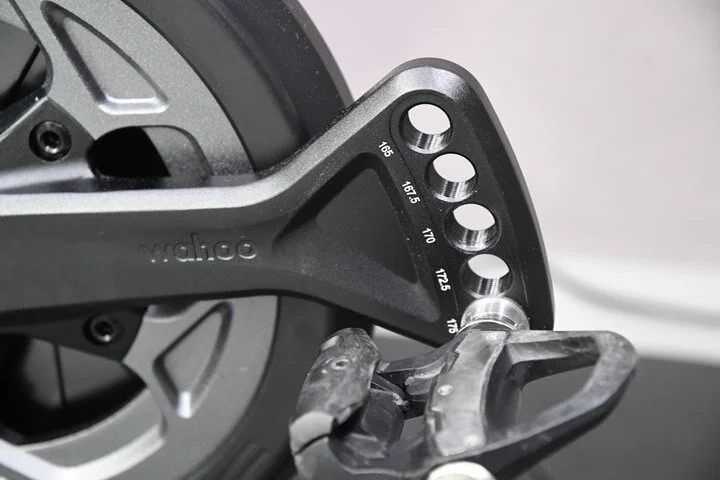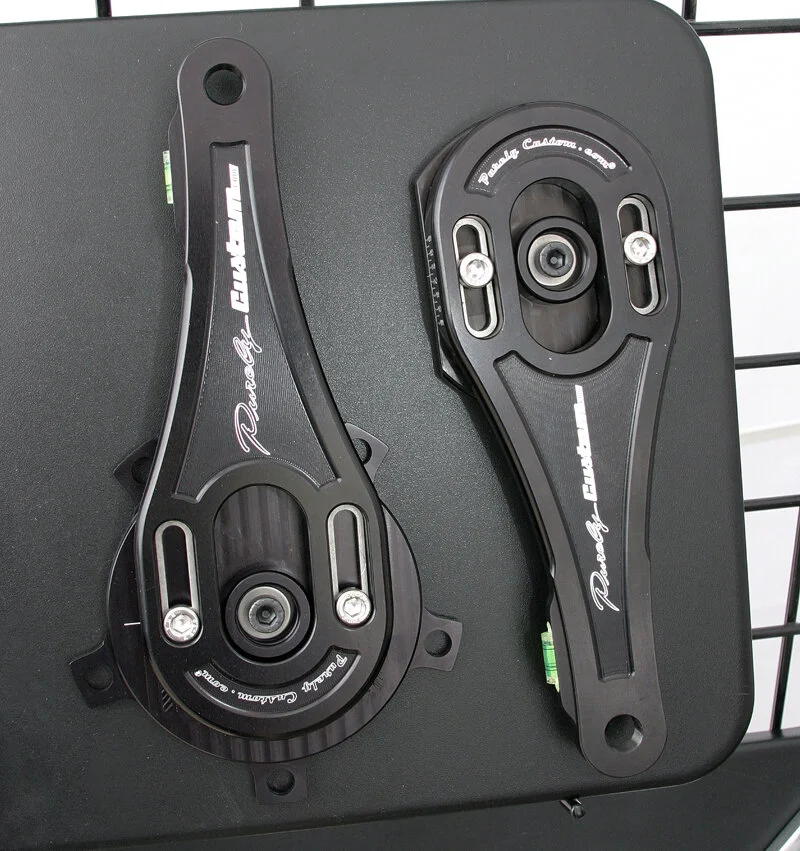Are you on the correct length cranks?
Maybe a better question is “does one crank length work perfectly for everybody?”
I know that is overly simplified but I think it makes the point early on here. Of course it matters! Repetitive activities are more comfortable and efficient with a certain dimension for the feet to travel. Think about watching a toddler navigate stairs...a bit scary due to their balance but more relevant to this discussion is how awkward it is biomechanically due to the mismatch in step height and leg length. The stair climbing session would be much easier for them if the stairs matched their legs!
From a variety of studies over the years, there is a general consensus among bike fitters and manufacturers that riders can use a variety of crank length across a fairly broad spectrum with no detriment to power or gross efficiency while riding. There is also a tendency among researchers and fitters to recommend a shorter crank length when in doubt. I am not going to jump into the ratios between femur and crank length and all that as I think it is a bit of a distraction from more relevant issues here.
A 2017 study led by Ferrer Roca concluded - “At the same time, the maximum flexion and range of motion of the hip and knee joints were significantly increased (1.8–3.4° and P < 0.05), whereas the ankle joint was not affected. In conclusion, the biomechanical changes due to a longer crank did not alter the metabolic cost of pedalling, although they could have long-term adverse effects. Therefore, in case of doubt between two lengths, the shorter one might be recommended.” There is a less often cited study from 2010 involving female mountain bikers that showed shorter cranks allowed them to return to peak power quickly from a coasting state. Think about how often that scenario plays out in cyclocross or mountain bike racing!
Now, from here, it easy to just toss the discussion into the bucket labeled “Oh Just Do Whatever You Want”.This is not totally wrong but we can travel a bit further in the quest to optimize the bike to the rider. There are a few formulas out there and honestly, the only one I really trust comes from the guys at BikeDynamics. Check their site out below:
http://bikedynamics.co.uk/FitGuidecranks.htm
I usually consider biomechanics of the rider as my primary guide for selecting crank lengths. This is most commonly an issue for riders under 5 ft 5 inches in my experience. What this really comes down to is this. Does the rider have the joint mobility to easily get through the pedal stroke? The easiest way to check this is the following:
Put the bike in the trainer
Get in the drops or aerobars (whatever the lowest torso position is)
Align the cranks parallel to the seat tube
Unclip the top foot and rest it on the pedal
Raise the top foot off the pedal without contorting yourself. If this is really tough I get a bit concerned the cranks may be too long. Ideally there should be some surplus movement leftover. This is a combination of actual mobility of the hip joint in the socket AND the stretngth of the hip flexor muscles to pull the leg upwards. This exercise assumes the rest of the position is close to correct of course…
Another red flag for me is riders with complaints of difficulty finding a good saddle height as they are close to the border of too low AND too high at the same time. Other complaints I have seen associated with too long cranks are the feeling of always being in the wrong gear climbing and the hips rocking excessively side to side during standing climbing.
Between these tips and the Bike Dynamics link above, you should have a reasonable starting point for getting the crank length that matches you and your goals. As I mentioned before, if you are not sure, I generally steer riders into a shorter crank length. Another thing I will mention is that I do not think it is imperative the cranks are the exact same between all the bikes a rider has. For example I happily ride 175mm cranks on my mountain bike and 172.5 on my road bike...BUT if I rode a TT bike I would 100% be on 165 cranks.
Side note for mountain bikers: Many folks are going to 165 or 170 cranks on mountain bikes to reduce pedal strikes on rocks. Definitely worth considering if you have this issue.
I hope this provided some clarity on what is a hotly debated topic in the cycling world that too often ends with the caveat of “Well, it depends.”





